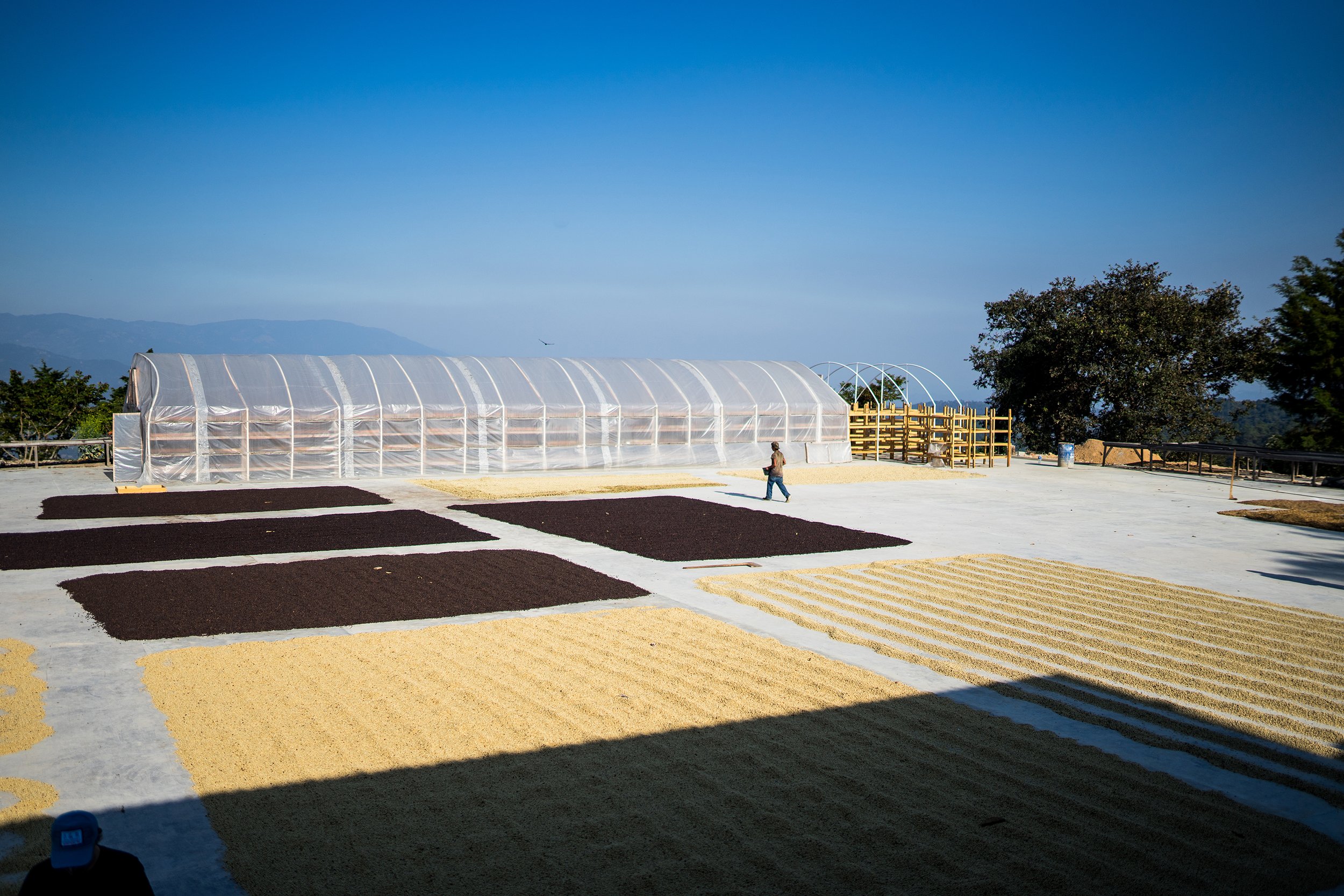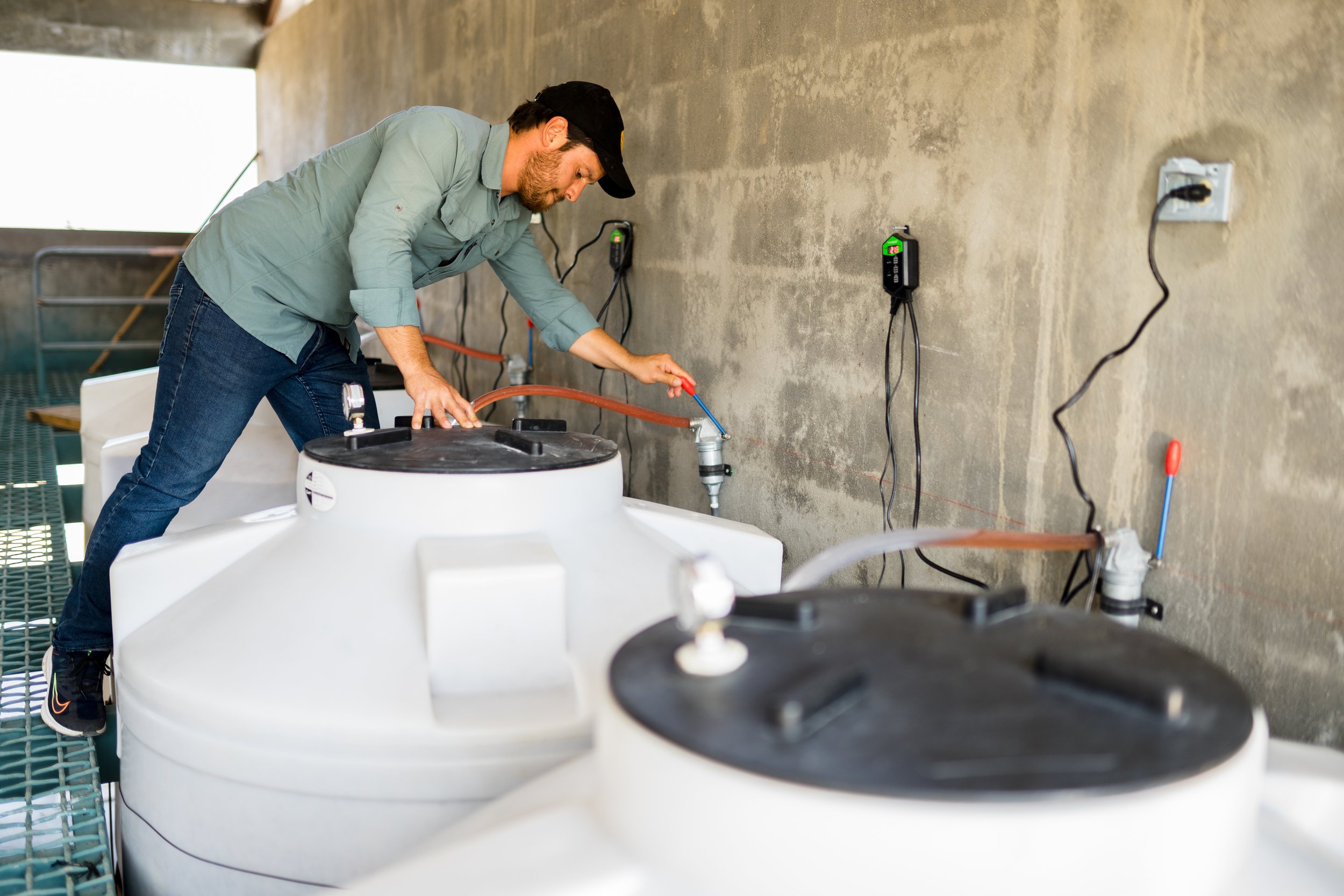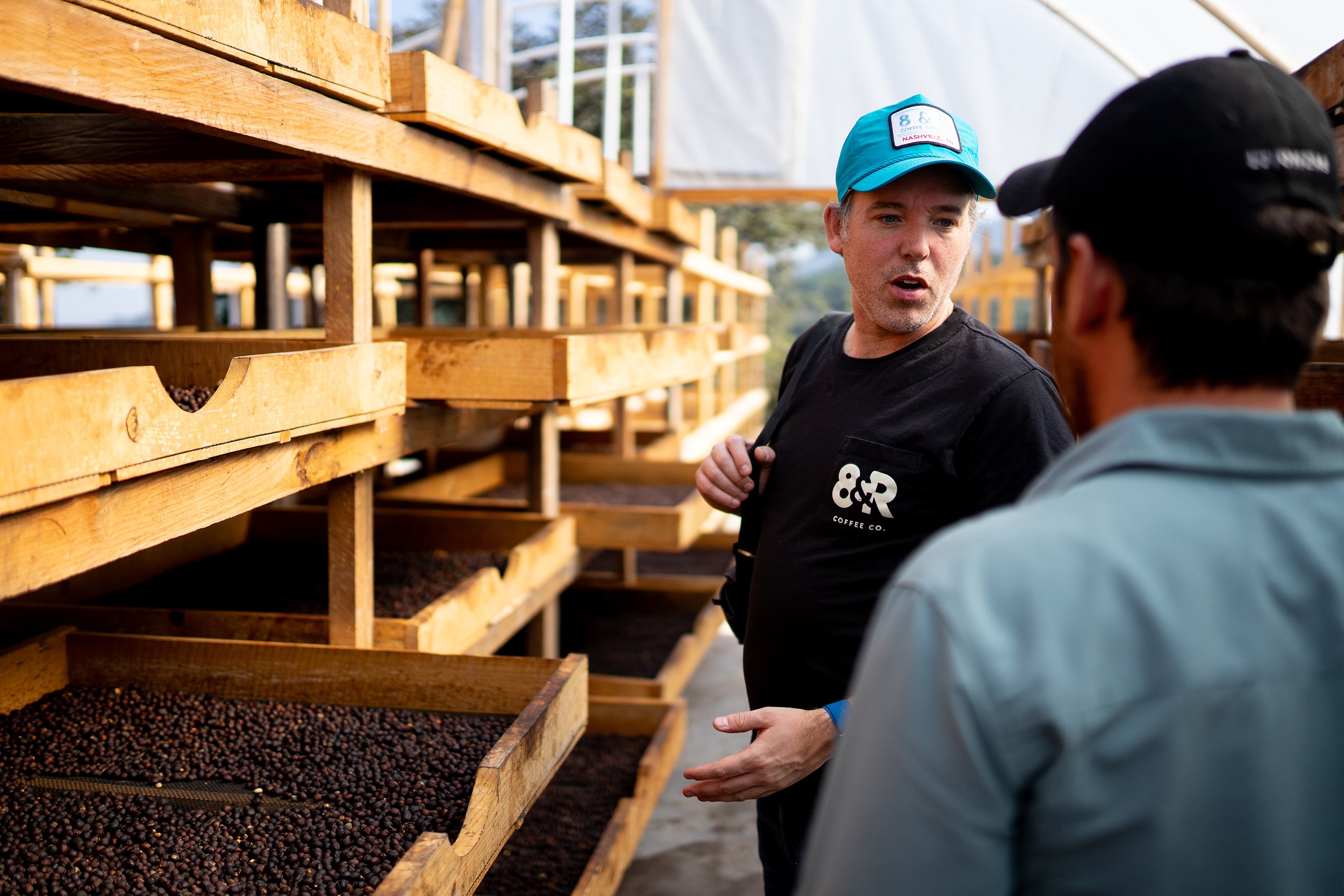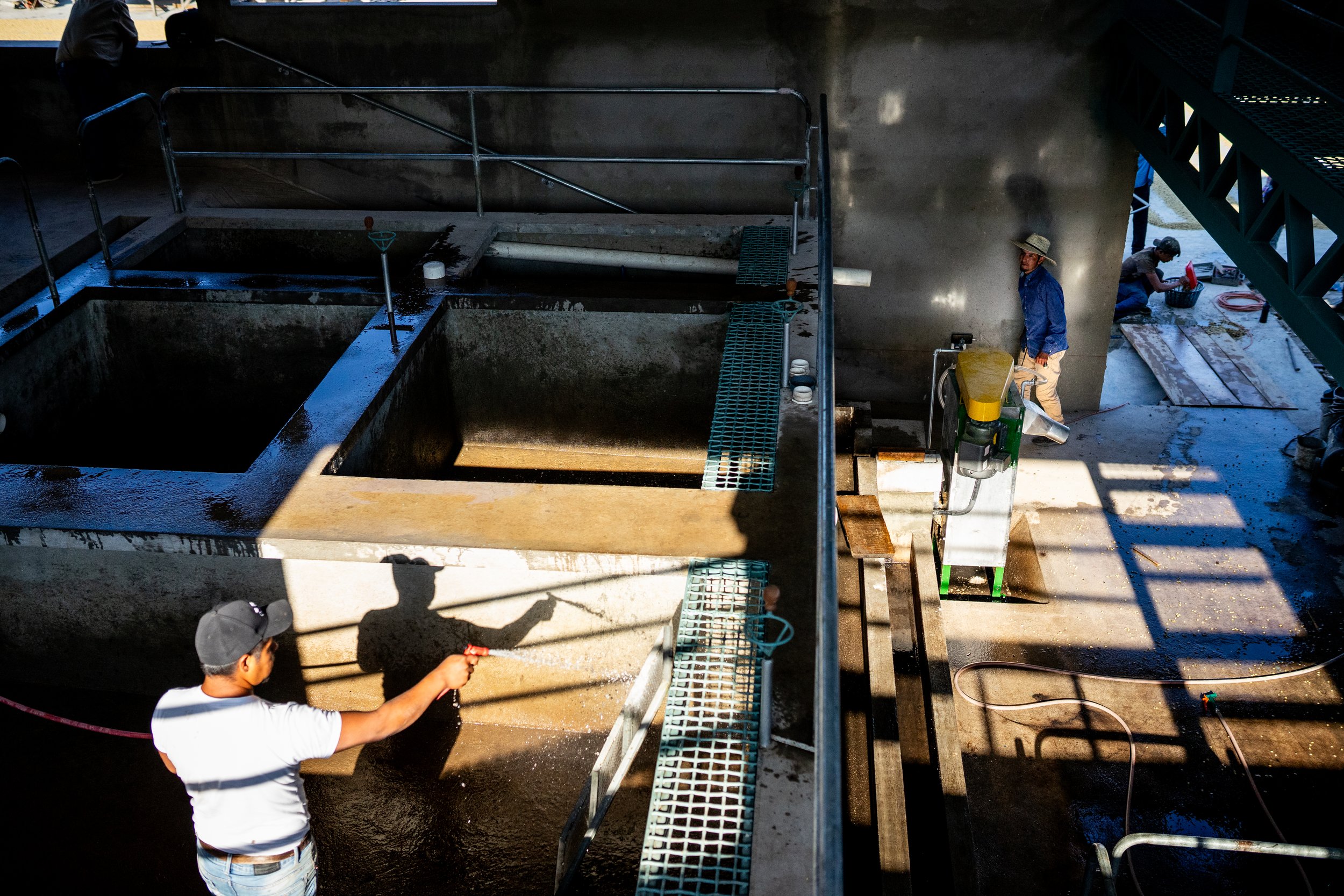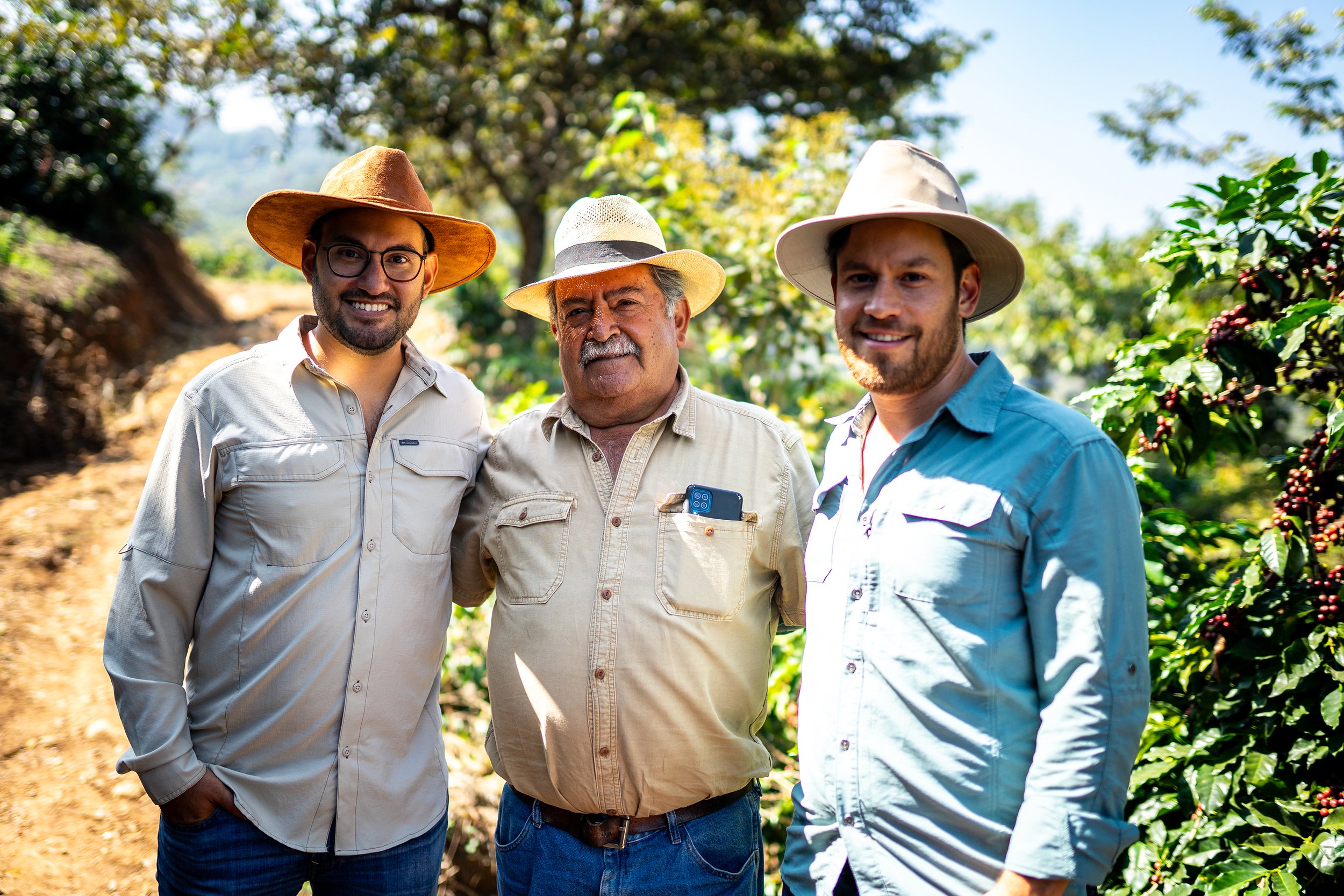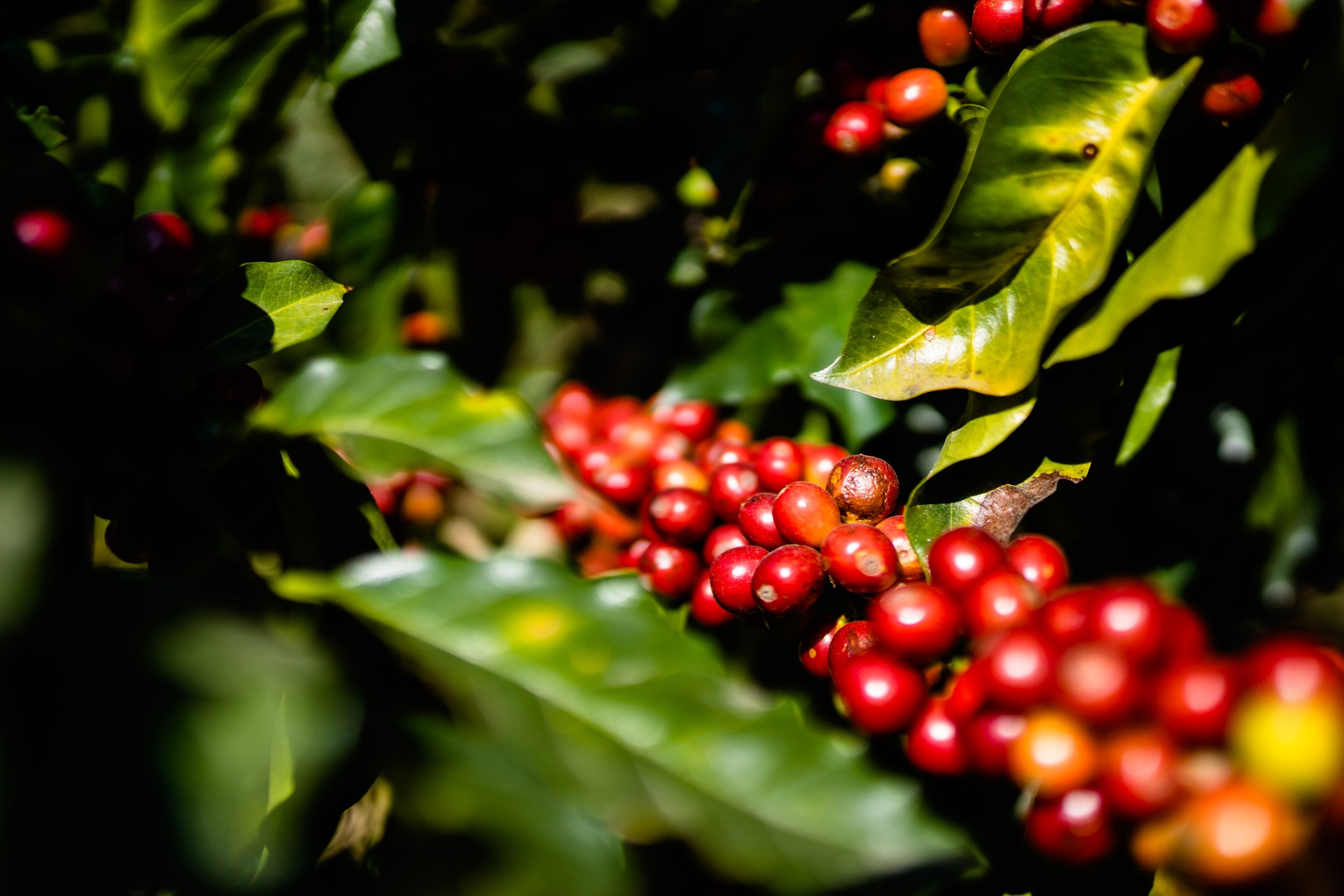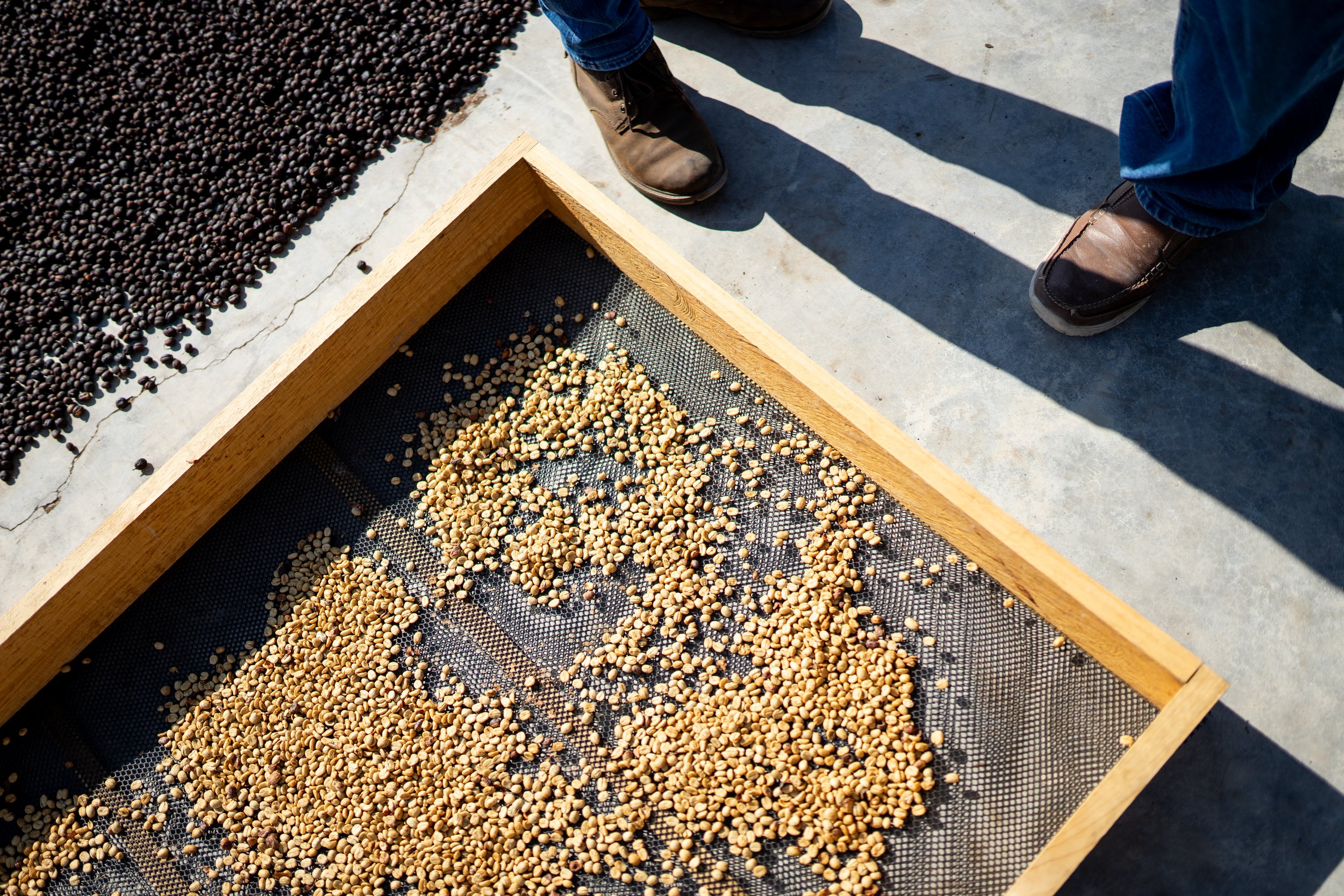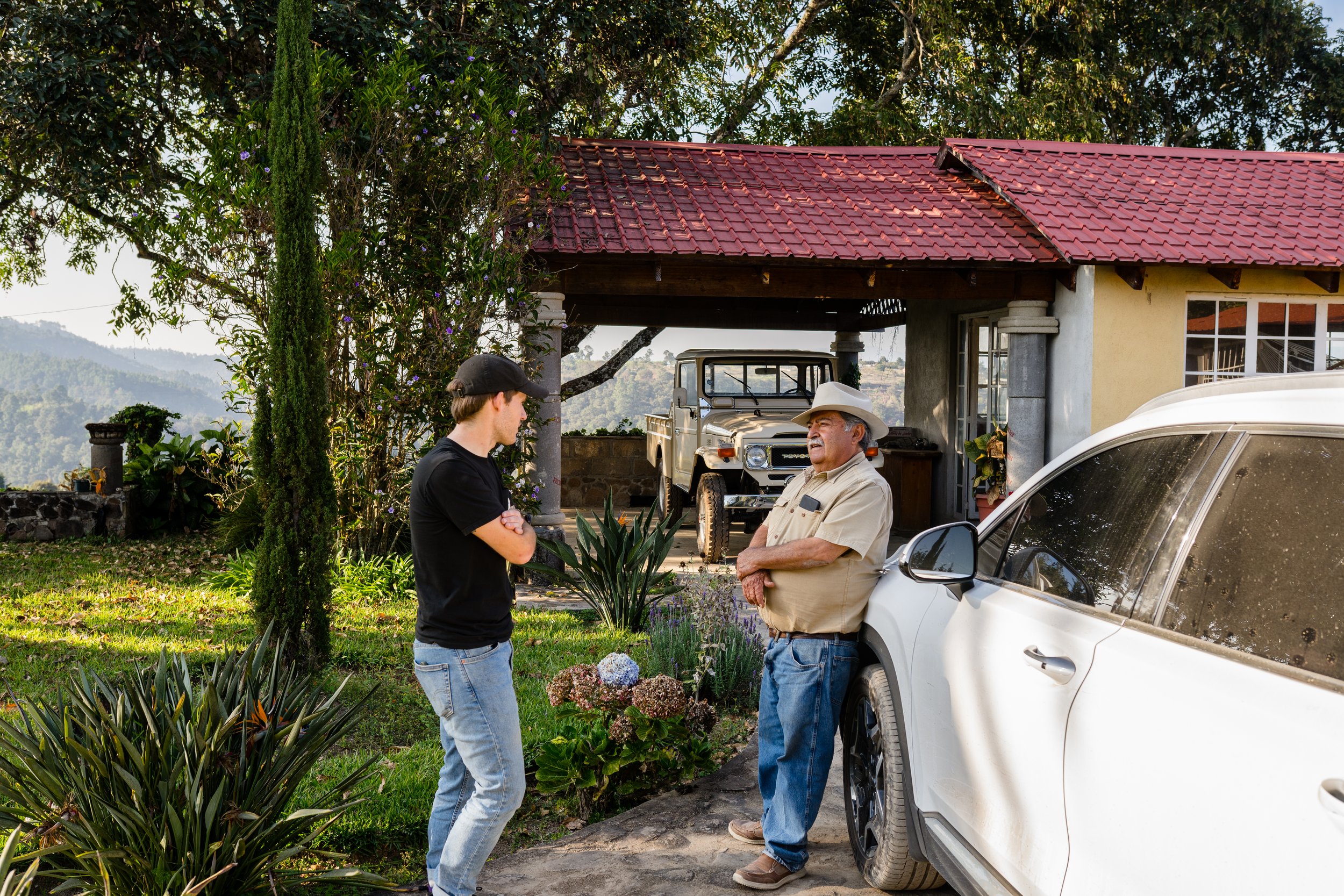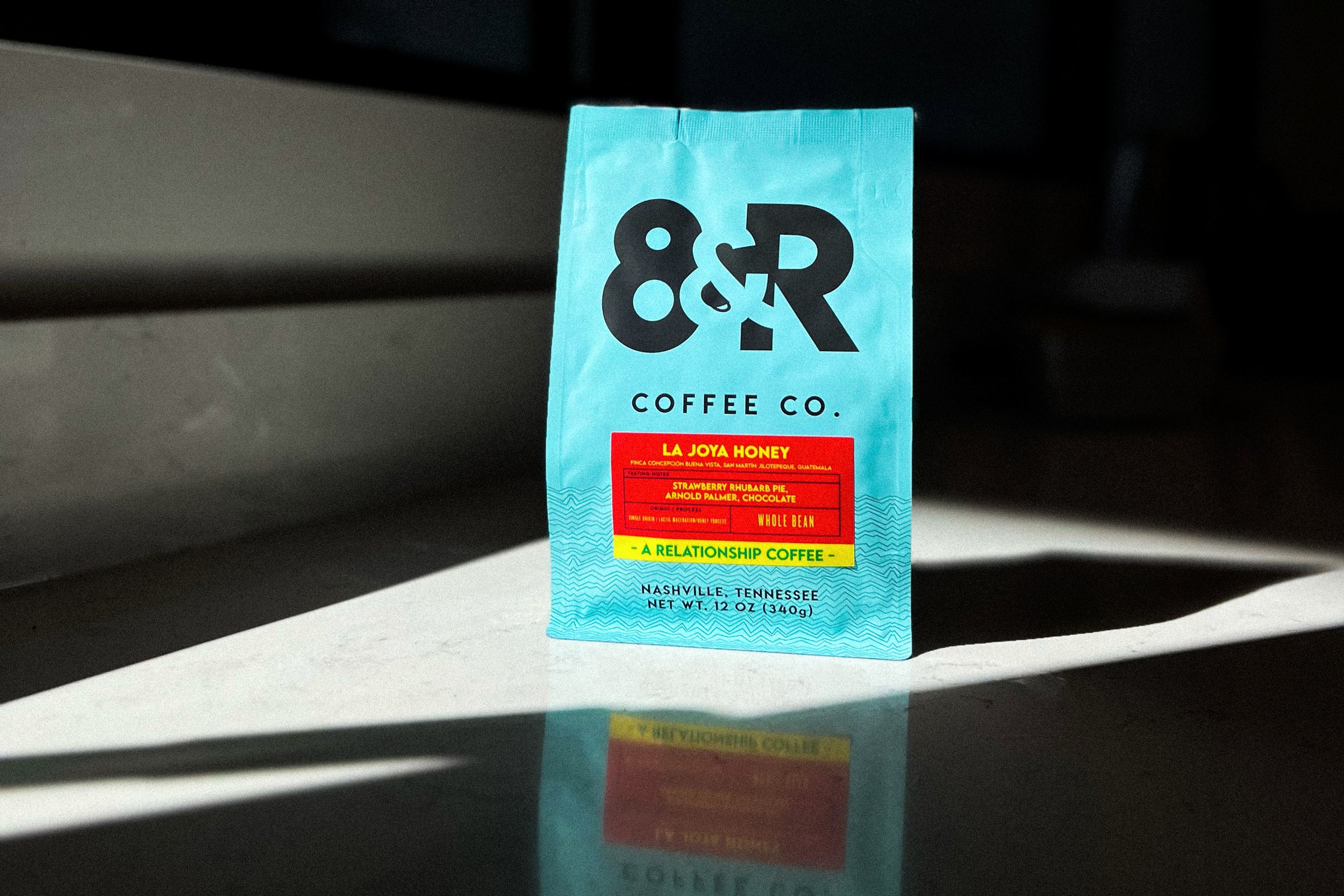Using science to make amazing coffees in Guatemala
Eddy Solano looks on as his wife, Adriana, a microbiologist, uses a microscope in the farm’s new lab.
We've been lucky to feature several amazing coffees from the Solano family at Finca Concepción Buena Vista in San Martín Jilotepeque, Guatemala over the last few years. They've become one of our biggest farm partners, and are some of our closest coffee friends! When they visited Nashville last year, we had the chance to hear directly from David about his unique experience as both a coffee farmer and World Barista Championship competitor, and tasted some amazing coffees with our entire 8th & Roast team.
One of the standout coffees from that night is our latest release: La Joya Honey—a Lactic Maceration Honey-Processed coffee. This is the first year the Solanos have produced honey-processed coffees, which are a step between a natural process, which is dried with the cherry fully intact, and a washed process, where the cherry is removed entirely.
For the lactic honey process specifically, cherries are selected for size and ripeness and then moved to fermentation tanks where they are sterilized with ozonated water for half an hour. After the water is drained, they fill the tanks again with UV-treated water and a lactic bacteria "mosto" (or liquid) from the same lot of coffee, which is extracted on-site in the farm's microbiology lab. Using lactic bacteria from coffee of the same lot and varietal enhances the fermentation, and intensifies the flavors naturally occuring in the coffee.
After 75-90 hours of fermentation in anaerobic tanks, the cherries are removed, depulped and taken directly to raised beds to dry for around 15 days. The resulting cup is complex and deep and gets more and more interesting as it cools! In the cup, we're tasting strawberry rhubarb pie, Arnold Palmer, and chocolate.
La Joya Honey is available now on drip or manual brew at our 3 streetside locations, and online soon!
Read below to hear David Solano talk about what processing their first honeyed coffees means to them.
David Solano makes a pourover of 8&R coffee at his cafe, 12 Onzas, in Guatemala City earlier this year.
"The idea started with the goal of creating a coffee that will have this really nice creamy, silky texture (created by the lactic bacteria) but with the brightness and sweetness that characterized the washed process. We were motivated and happy to make our first honey process. This year, we ran for the first time in the farm history, our own wet mill on site. This is a huge milestone for us, because now we are able to control the missing piece in our specialty coffee: fermentation... We were motivated to learn more about it, explore the cup profile that we can get out of our coffees by doing the honey process. Our starting point was the lactic natural process (in terms of bacteria concentration), but drying of the honey process was also something new for us. We were so happy to learn more about coffee profiles, and this Honey lactic definitely taught us a lot.
Being able to have our own wet mill, definitely sparked our desire to play more with the coffee. This year marked the base or starting point for more experimentation for sure. It definitely opened our mind to understanding the possibilities of working with live mucilage and the possibilities of enhancing these new techniques with natural agents that live on the same ecosystem, for example, fruits that adapt to the same ecosystem of our coffee trees.
Also, for our community, it was the first time that people learned and worked the honey process. It's amazing how these small ideas spark interest not only for us, but also for the whole community."


